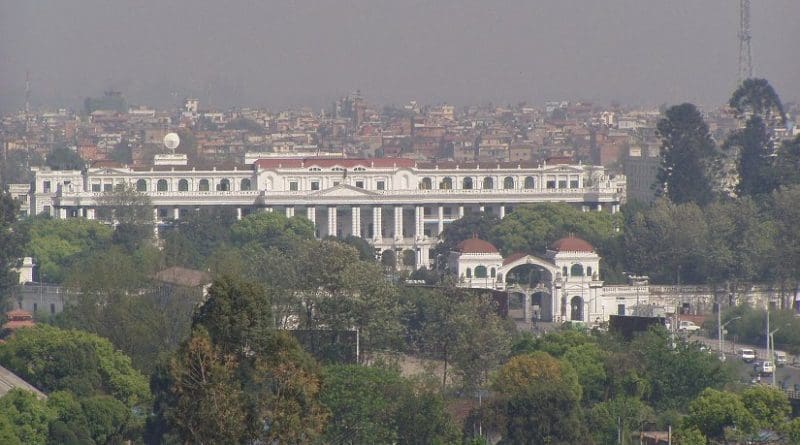Nepal: Four Major Parties Agree On New Constitution – Analysis
By SAAG
By Dr. S. Chandrasekharan
On 8 June, the four major parties- the Nepali Congress, the UML, the UCPN (Maoist) of Dahal and Madhesi Janadhikar Forum ( dem) of Vijay Gacchadar concluded a sixteen-point agreement on the new constitution.
Though the media reports indicate as if the final draft has been made out, it looks that only an outline has been agreed upon and problems are still likely to arise when the details are to be filled up.
It is also being made out that this will be the final stage of the deliberations that have been going on since the formation of the second Interim Constituent Assembly and from now on it will go to the CPDCC headed by Baburam Bhattarai to prepare the draft after making “another effort” to get the approval of those parties left out. The Maoist Chief Dahal seems to have abandonedt his thirty parties alliance in the negotiations.
The four parties command in all a majority of 465 out of 601 and they hope that some from the minor parties may also join and support the draft. With this strength, the ruling parties expect to get the provisions of the constitution passsed in the Assembly not withstanding the opposition of many of the Madhesi and Janajathi groups.
A ‘spin’ is being made out that the devastating earthquake of April 25 acted as a “trigger” to get the parties to compromise on their earlier rigid stand and move forward for the new constitution. But nothing could be farther from the truth.
The political leaders were no where to be seen in the first few days of the earth quake and when they did surface later they were booed and hooted out! The government of Sushil Koirala did not fare well either when there was total confusion and lack of coordination in the first few days!
Now the highlights of the 16 point Pact of the four parties:
- The country is to be federated into eight federal provinces on the basis of five ‘facts’ namely- ethnicity/community, language, culture, regional continuity and history and finally on four factors of capability that would include economic capability, infra structural potential, availability of natural resources and administrative feasibility. ( A very complicated formulation which perhaps reads better in the original Nepali script. To me it appears to be an attempt not to include the industrial districts of Morang and Sunsari in one of the two Terain provinces!)
- A Federal Commission will be formed to finalise the demarcation of the federal states while naming them will be left to the federal assemblies that will approve only with a two third majority. The Commission will have a mandate of six months time to complete the demarcation. ( Judging by the innumerable problems involved, it is doubtful whether the Commission would be able to decide on this complicated issue in six months when the political parties in the last six years have not been able to come to an agreement. Much would depend on the composition of the Commission)
- The Constituent Assembly will be turned into a central Legislative Parliament after the promulgation of the new constitution. (It is not clear how the current strength of 600 and odd members will be reduced to less than half the strength)
- The Lower House will have a strength of 275 members of whom sixty percent will be directly elected in ‘first past the post system’ – which comes to 165 and the rest will be elected by proportional representation. The upper House will have 35 members, and all elected through proportional representation.
- A Constitutional Court will be established and will be in existence for ten years to resolve disputes in local, federal and central courts.
- All executive powers will be vested in the Prime Minister and there will be a ‘ceremonial’
President elected through the Parliament. (Probably the Maoists have given up on an “Executive Presidency” in return for agreeing on eight states federal structure)
- Elections to the posts of President, Vice President, Prime Minister, Speaker and Deputy Speaker will all be made after the declaration of the new constitution.
The most crucial point that should have been decided was on the configuration of the provinces. In fact, the finalisation of the new constitution was getting delayed only on account of differences among the political parties on the question of identity-based provinces. By skirting this issue and leaving it to a future Federal Commission, the leaders of the four political parties have not only abandoned their responsibility but have given sufficient space for future strife, discord and instability.
What a pity that the legislators after seven years of tortuous negotiations have produced a damp squib.

